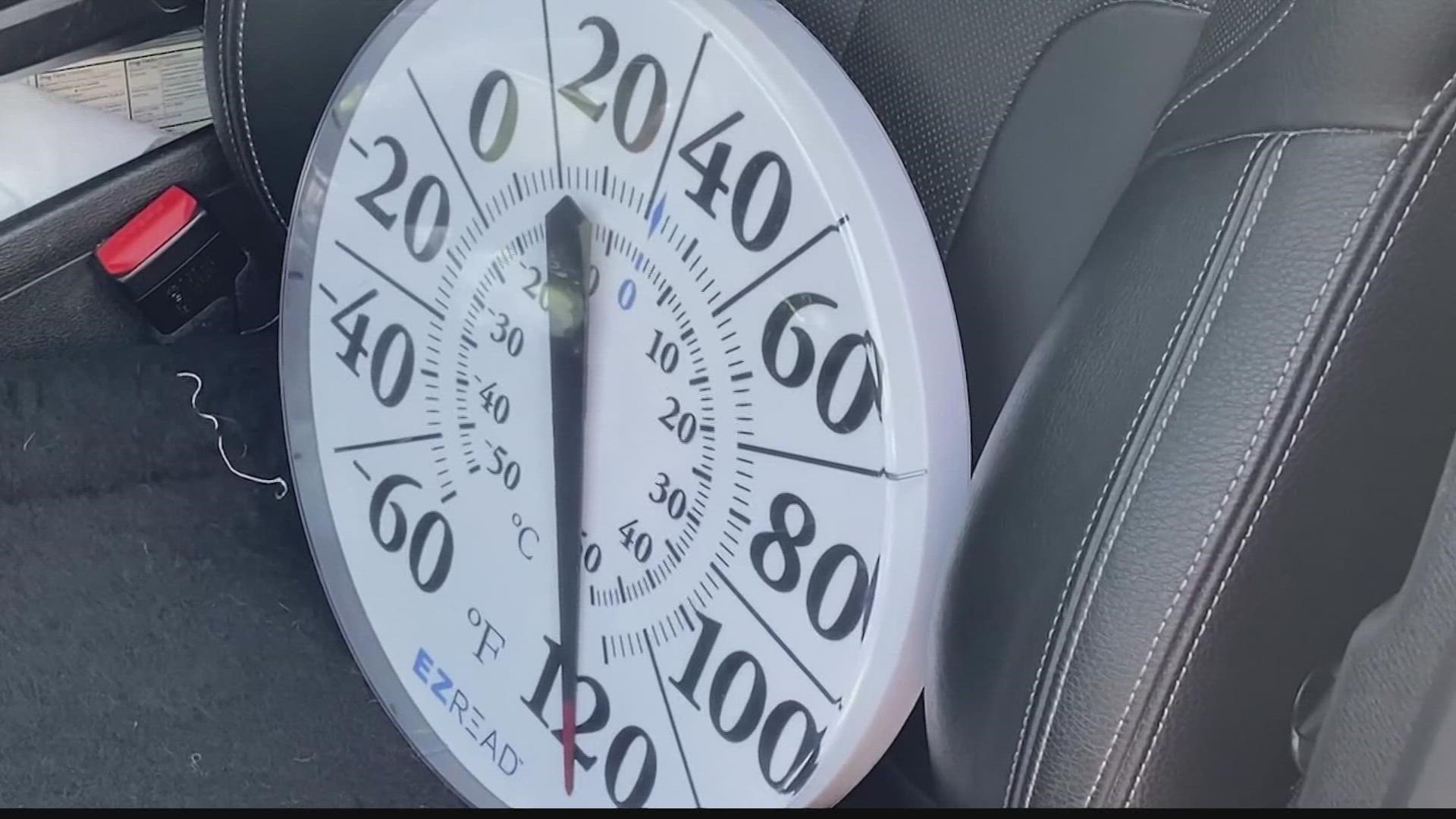HUNTSVILLE, Ala. — Summertime means fun in the sun, but too much sun..and heat...can be hazardous to your health.
Huntsville is under a heat advisory and Don Webster from HEMSI says it's important to take that seriously, and "worst ramifications, you're going to die."
He's talking about leaving loved ones in vehicles. Temperatures in the car can soar well above the temperature outside. He says, "In this kind of heat, don't leave anything in there. You don't want to leave your groceries your kids in there or your pets in there."
If you cant stay out of the sun, Webster advises you to make sure you stay hydrated, and wear light clothing, take regular breaks. and sit in front of a fan or in air conditioning.
Even if you're in great physical shape, you could still experience heat exhaustion that can lead to heatstroke.
And if your life is hectic and you fear you might forget a small child in the car... here's some advice from Don Webster:
"If you got to take a piece of paper, write 'Bobby is in the backseat, Suzie is in the front seat', put your purse in the back, briefcase, laptop, phone, something [ypu'll remember] back there."
Alabama Department of Public Health warns that with heat indices rising into triple digits, you should know and be on the lookout for warning signs of heat illnesses.
They say heat-related illnesses occur when the body is exposed to high temperatures. Anyone exposed to high temperatures or extreme heat can experience symptoms when the body’s temperature control system is overloaded.
According to ADPH, the most common heat-related illnesses are:
- Heat cramps
- Heat exhaustion
- Heatstroke
What are the symptoms of heatstroke, heat exhaustion, and heat cramps?
- Heat cramps - include muscle pains or spasms (abdomen, arms or legs), profuse sweat, and high salt concentration in the sweat.
- Heat exhaustion - associated with heavy sweating, paleness, muscle cramps, tiredness, weakness, dizziness, headache, nausea, or vomiting and fainting. Other possible symptoms may include cool and moist skin, fast and weak pulse rate, fast and shallow breathing, or irritability.
Older adults, those with high blood pressure, and those working or exercising in a hot environment are prone to heat exhaustion. If heat exhaustion is not treated, it may progress to heatstroke.
What is heatstroke?
Heatstroke or sunstroke - The most serious heat-related illness, a life-threatening problem, may occur when the body is unable to control its temperature.
What are heatstroke symptoms?
- Body temperature may rise to 106 degrees F or higher within 10 -15 minutes.
- Warning signs of heat stroke vary, but include the following:
- An extremely high body temperature (above 103 degrees F)
- Red, hot and dry skin (no sweating)
- Rapid, strong pulse
- Throbbing headache
- Dizziness
- Nausea
- Confusion
- Unconsciousness
Heatstroke is a medical emergency and even with immediate treatment, it can be life-threatening or cause serious long-term problems.
If you suspect someone has heatstroke, ADPH recommends you call 911 and do the following:
Take immediate steps to begin cooling the victim in any of the following ways:
- Get the person to a shady area, cool rapidly in a tub of cool water, place in a cool shower, spray with cool water from a garden hose, splash with cool water, or, if the humidity is low, place in a cool, wet sheet and fan vigorously.
- Monitor body temperature and continue cooling efforts until the person's body temperature drops to 101 to 102 degrees F.
- If emergency medical personnel are delayed, call a hospital emergency room for further instructions.
A person with heat stroke is likely to be unconscious or unresponsive, so he or she cannot safely consume any liquids. Never give any alcohol to a person with heat stroke or any heat illness.
Drink plenty of fluids, except alcohol or caffeinated beverages, to prevent dehydration
Stay in an air-conditioned or fan-cooled room
Keep out of the sun by seeking shelter, especially during the hottest parts of the day.
Wear a wide-brimmed hat, light-colored and loose-fitting clothing, and use sunscreen of SPF 15 or higher
Take cool showers or baths, and reduce or eliminate strenuous activities during the hottest times of the day.
Individuals with heart disease, diabetes, obesity, poor circulation, or previous stroke problems, people of older and younger ages, and those taking certain medications are at greater risk of becoming ill in hot weather.

